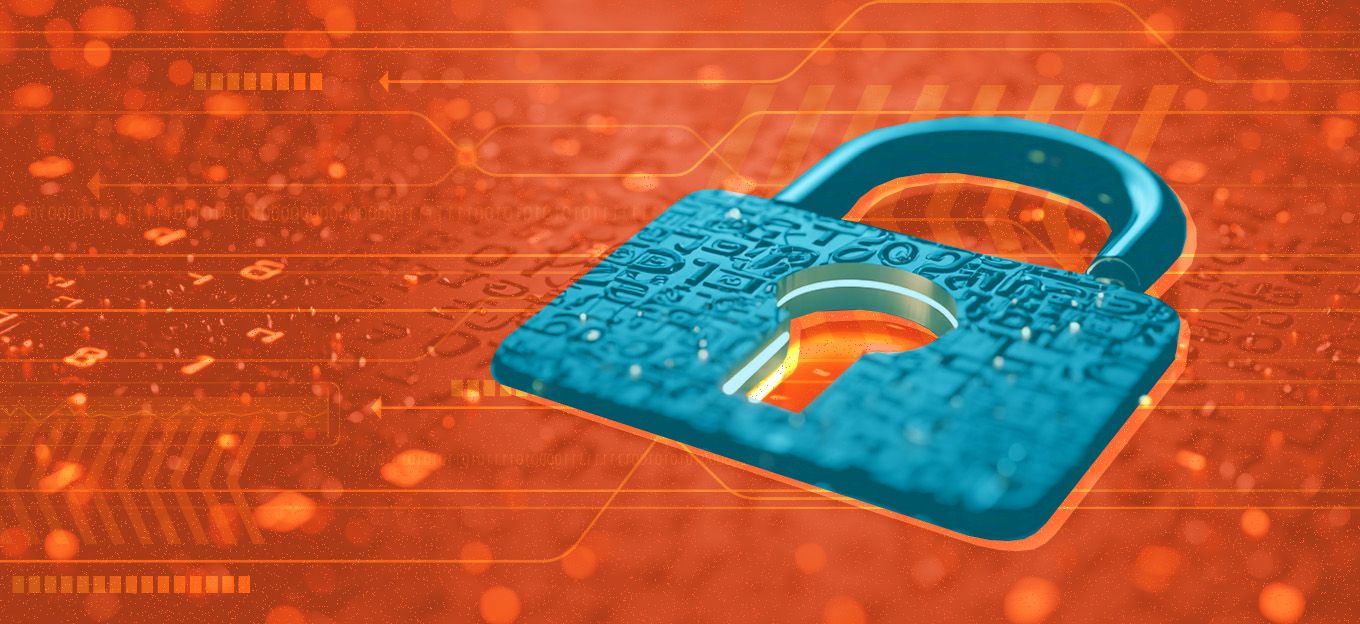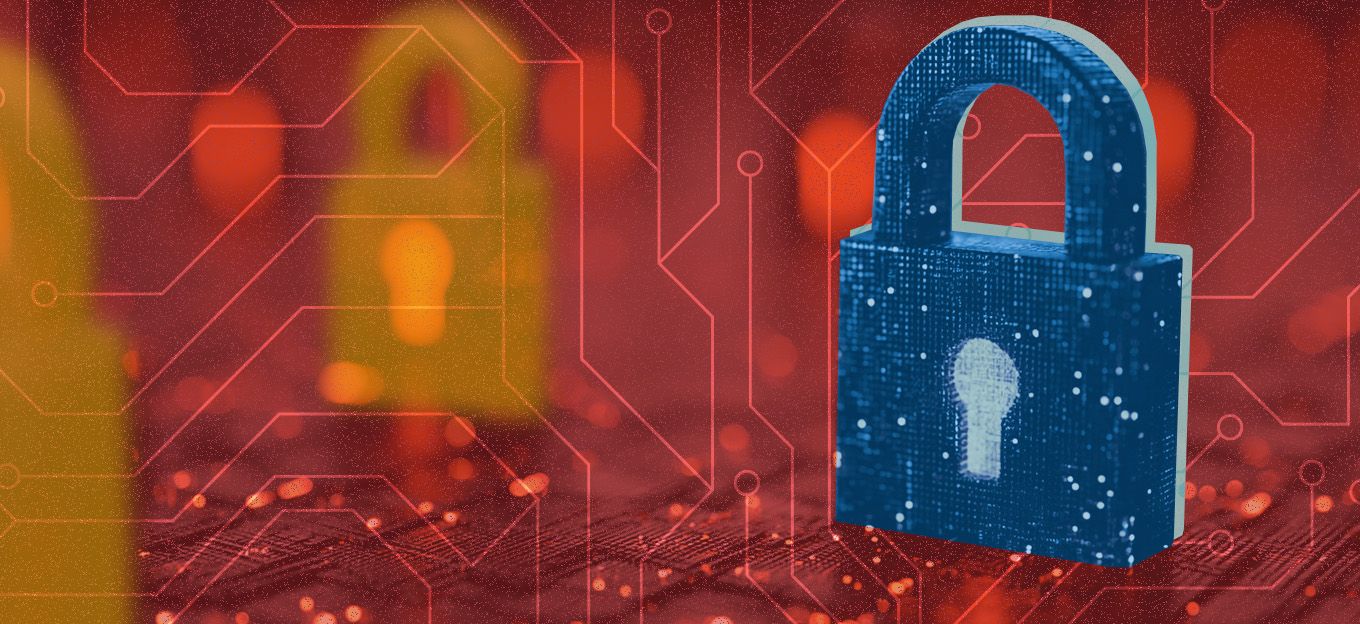Essential IoT Compliance Guidelines for Today’s Regulatory Challenges
Essential IoT Compliance Guidelines for Today’s Regulatory Challenges
- Last Updated: July 14, 2025
Aeris
- Last Updated: July 14, 2025



If you’re responsible for managing an IoT deployment, your role may include designing smart products as an OEM, enabling connectivity as a solutions provider or overseeing complex global rollouts as an enterprise leader. In any of these cases, IoT regulatory compliance has become one of your most critical success factors.
In fact, research firm Transforma Insights says regulatory compliance has overtaken cost and connectivity as the top challenge in IoT. And it’s easy to see why: Regulatory requirements are expanding in scope and complexity, and compliance now determines whether your product can be legally sold across different markets.
Plus, the consequences and costs of noncompliance are rising. Devices are being blocked from distribution due to radio interference, recalled over cybersecurity vulnerabilities and linked to fines and lawsuits involving data privacy failures. What used to be a check-the-box task is now a high-stakes, strategic imperative—and a make-or-break factor for your global growth strategy.
In this blog, you’ll explore the fundamentals of IoT compliance, the top regulatory challenges facing deployment teams and proactive strategies to get ahead of risk, including how to scale securely and sustainably across markets.
IoT Regulatory Compliance Basics
IoT compliance means ensuring that your connected products meet a wide range of requirements, from safety and security to connectivity, sustainability and data privacy. But it doesn’t stop at launch. Staying compliant means actively managing those standards throughout the entire product lifecycle.
Cybersecurity Standards
Cybersecurity is the cornerstone of IoT compliance. Weak default passwords, unpatched firmware and insecure interfaces leave connected devices vulnerable to attack. In response, global regulators are mandating stricter security. Some of these frameworks and laws include:
- U.S. National Institute of Standards and Technology Cybersecurity Framework (NIST Cybersecurity Framework) — This is the U.S. gold standard for integrating security throughout the product lifecycle, from initial design through decommissioning.
- U.S. National Institute of Standards and Technology Internal Report 8563 (NIST IR 8563) — Published in April 2025, this summary report outlines proposed updates to foundational guidance (NIST IR 8259 and 8259A), with a focus on operational technology integration, secure end-of-life strategies, and privacy risk modeling.
- U.S. Federal Motor Vehicle Safety Standards (FMVSS) — Issued by the National Highway Traffic Safety Administration (NHTSA), FMVSS are U.S. regulations specifying design, construction, performance, and durability requirements for motor vehicles and regulated automotive components. Compliance is mandatory for vehicles and equipment intended for use on public roads.
- U.S. Federal Motor Carrier Safety Administration Electronic Logging Device (FMCSA ELD) Rule — This U.S. regulation mandates the use of electronic logging devices to record driving hours for commercial motor vehicles. It aims to improve road safety and ensure compliance with hours-of-service rules by requiring accurate tracking and reporting of drivers’ work hours.
- North American Electric Reliability Corporation Critical Infrastructure Protection (NERC-CIP) — A regulatory framework for protecting bulk electric system assets, NERC-CIP establishes security controls, incident reporting protocols and audit-readiness requirements for utilities and energy providers managing operational technology networks.
- European Union Agency for Cybersecurity Guidelines (ENISA Guidelines) — These guidelines represent the EU’s framework for secure-by-design development and mandate conformity assessments for connected infrastructure and critical systems.
- European Union Cyber Resilience Act (EU CRA) — A sweeping EU regulation that will require CE marking for digital products, mandating secure-by-default design, vulnerability handling processes, and post-market support throughout the product lifecycle.
- European Standard EN 18031 — This harmonized standard outlines common cybersecurity requirements for internet-connected radio equipment, including IoT devices. It supports compliance with the essential requirements of the EU Radio Equipment Directive (RED), focusing on secure-by-design principles for connected products.
- European Union Directive on Security of Network and Information Systems (EU NIS2 Directive) — The updated NIS2 directive strengthens cybersecurity obligations for essential and important entities, requiring risk management practices, incident reporting, and supply chain security.
- United Nations Economic Commission for Europe WP.29 / Regulation No. 155 (UNECE WP.29 / R155) — These automotive cybersecurity regulations establish baseline requirements for risk management, software updates and threat monitoring in connected vehicles, with type approval prerequisites for market access in the EU and other participating economies.
- UK Product Security and Telecommunications Infrastructure Act (PSTI Act) and California Senate Bill 327 (SB-327) — These regional regulations require secure default credentials, enforce update transparency and mandate patching to improve long-term device security.
- Underwriters Laboratories 2900 Series (UL 2900 Series) — This set of voluntary U.S. standards addresses cybersecurity vulnerabilities in network-connected devices and software systems through structured evaluation and testing.
- International Electrotechnical Commission Standard 62443 (IEC 62443) — A globally recognized cybersecurity framework for industrial automation and control systems, IEC 62443 defines roles, security levels, risk assessments and control measures for managing operational technology (OT) networks in critical sectors like energy and manufacturing.
These frameworks are shaping a more proactive and defensible approach to device security. See the Aeris IoT Security Research Report for more information on how security readiness and regulatory alignment are now top priorities for enterprises building connected products.
Device & Network Interoperability Standards
To operate effectively and legally across diverse platforms, networks and geographies, your IoT devices must adhere to a wide range of global interoperability standards. These frameworks ensure that devices can communicate securely, reliably and without interference:
- Institute of Electrical and Electronics Engineers (IEEE) — The IEEE provides global standards for IoT networking, data formats and physical device interfaces to ensure reliable performance and interoperability.
- Internet Engineering Task Force (IETF) — The IETF develops essential protocols for IoT communications, including IPv6, MQTT, and CoAP, which underpin modern device connectivity.
- International Organization for Standardization / International Electrotechnical Commission (ISO/IEC 30141) — This international standard defines a reference architecture for the IoT, offering a framework for structuring interoperable systems.
- European Telecommunications Standards Institute Technical Report 103 645 (ETSI TR 103 645) — This EU technical report establishes baseline cybersecurity requirements for consumer IoT devices, emphasizing secure communications and interoperability.
- Federal Communications Commission Part 15 (FCC Part 15) — These U.S. regulations govern radio frequency emissions from electronic devices to prevent harmful interference with other spectrum users.
- Conformité Européenne (CE) Marking — This EU certification demonstrates that a product complies with European health, safety and environmental requirements, including RF and EMC performance.
- Ministry of Internal Affairs and Communications Technical Regulations (MIC) — Japan’s MIC enforces technical standards for RF emissions and radio spectrum compatibility for IoT devices.
- EU Radio Equipment Directive (RED) — This EU directive applies to all wireless-connected equipment sold in the EU, requiring EMC, safety, and spectrum compliance before market entry.
- UK Conformity Assessed (UKCA) Marking — The UKCA mark is the post-Brexit replacement for CE certification, covering RF and electrical safety for wireless devices sold in Great Britain.
Product Safety & Liability Standards
Connected devices aren’t just digital assets — they can cause real-world consequences, including physical injury, property damage, financial loss or privacy violations. Regulators around the world hold manufacturers accountable for product performance, risk disclosure and failure to prevent foreseeable harm.
Here are the key safety and liability standards you should know:
- Conformité Européenne (CE) Marking — CE Marking is mandatory for most IoT devices sold in the European Economic Area and denotes compliance with EU health, safety, and environmental protection directives, including the Low Voltage and EMC Directives.
- International Electrotechnical Commission Standard 62368-1 (IEC 62368-1) — This international safety standard covers AV and ICT equipment, including IoT devices, and uses a hazard-based engineering approach. It is gradually replacing older standards like IEC 60950 and 60065.
- European Union Product Liability Directive (EU PLD) — The EU Product Liability Directive establishes strict liability for manufacturers and importers of defective products that cause injury or property damage, even in the absence of negligence.
- Japan’s Product Safety of Electrical Appliances and Materials (Japan PSC Mark) — The Japan PSC Mark is required for many electrical products sold in Japan, and noncompliance may lead to import bans or product recalls.
- Singapore’s Consumer Protection Safety Requirements (CPSR) — The CPSR requires 33 categories of household electrical, electronic and gas appliances and accessories, also known as Controlled Goods, to be tested to specified safety standards, registered with the authority, and affixed with the Safety Mark before they can be sold in Singapore.
- Singapore’s Infocomm Media Development Authority (IMDA) Equipment Registration Framework — Singapore’s IMDA requires all telecommunications and radio communication equipment, including IoT devices that operate on licensed or license-exempt frequencies, to be tested and registered before sale or use. Products must meet local technical standards, be approved by a designated conformity assessment body, and display the IMDA compliance label.
- Canadian Standards Association (CSA) Certification — CSA Certification confirms that electronic products meet Canadian safety standards, and it is commonly required for both consumer and industrial IoT deployments.
- United Kingdom Conformity Assessed (UKCA) Marking — The UKCA Mark is the United Kingdom’s post-Brexit replacement for CE Marking and is required for most electrical and radio devices sold in Great Britain.
- China Compulsory Certification (CCC) — CCC certification is required for many electronic products sold in or imported into China and ensures compliance with national safety, EMC, and consumer protection standards.
Data Governance and Localization Requirements
Data privacy laws are evolving rapidly, and managing data across borders has become significantly more complex. If your IoT solution collects, stores or transmits personal or sensitive data, you must comply with a growing patchwork of jurisdictional requirements.
Key global privacy regulations and rulings include:
- Payment Card Industry Data Security Standard (PCI-DSS) — A global security standard for organizations that handle credit card information, PCI-DSS mandates controls around data protection, access management, breach response, and secure transmission to minimize fraud and ensure payment data integrity.
- General Data Protection Regulation (GDPR) — The GDPR is the European Union’s flagship data privacy law that establishes strict rules for personal data processing, user consent, access rights, encryption, and breach notifications.
- U.S. Health Insurance Portability and Accountability Act / Health Information Technology for Economic and Clinical Health Act (HIPAA / HITECH) — These U.S. laws establish privacy and security rules for protecting electronic health records and patient data, requiring access control, breach notification and secure transmission for any connected device used in healthcare.
- California Consumer Privacy Act / California Privacy Rights Act (CCPA/CPRA) — The CCPA and its amendment, the CPRA (effective 2023), define consumer rights related to collecting, selling, sharing, and deleting personal data for California residents.
- Personal Information Protection Law of the People’s Republic of China (PIPL) — China’s PIPL regulates personal data processing and cross-border transfers, mandates purpose limitation and consent, and imposes severe penalties for violations.
- Lei Geral de Proteção de Dados (LGPD) — The LGPD is Brazil’s general data protection law, closely modeled on the GDPR, and applies to organizations that collect or process data on Brazilian residents.
- Schrems II Ruling — This 2020 decision by the Court of Justice of the European Union invalidated the EU–U.S. Privacy Shield and requires the use of Standard Contractual Clauses (SCCs) or equivalent safeguards for international data transfers.
- Data Localization Laws — Several countries, such as India, Russia, Vietnam, and Indonesia, now require certain categories of personal or financial data to be stored and processed locally, restricting or outright prohibiting international transfers.
- Data Transfer Rules — Issued by governments or regulatory bodies, these rules may mandate data encryption in transit and at rest, use of local cloud infrastructure, and in some cases, formal approval processes before international transmission.
Top Challenges in IoT Regulatory Compliance Today
Even the most seasoned teams face hurdles when it comes to IoT regulatory compliance. From navigating a maze of global standards to adapting to constantly shifting privacy laws, staying compliant is no small task. These challenges don’t just slow you down — they can affect your bottom line, delay product launches and limit access to key markets.
Here’s a closer look at why compliance remains a moving target for IoT innovators:
1. Fragmented Global Standards
No two countries regulate IoT in the same way. A device approved in the U.S. may still need separate CE (Europe), UKCA (UK) or RCM (Australia) certifications — each with its own processes, testing protocols and documentation. The lack of harmonization increases time-to-market and resource strain, especially as your global footprint grows.
2. Wireless and RF Complexity
Wireless compliance goes far beyond checking a box. IoT devices often include multiple radios — NB-IoT, LTE-M, Wi-Fi, Bluetooth, LoRaWAN and more — each with unique technical and regulatory demands. You must validate emission limits, antenna tuning and coexistence, often country by country. Proprietary networks can add further certification hurdles. RF compliance is technically demanding and a likely place for delays.
3. Lengthy and Costly Certification Processes
Compliance isn’t just complicated; it’s time-consuming and expensive. Certification workflows can last 6-12 months and involve multiple stakeholders, such as accredited labs, regulatory agencies, industry groups and network operators. Any design change can trigger recertification. Tight planning is essential to avoid launch delays. Look for solutions that enable you to show proof of compliance to auditors or partners annually.
4. Evolving Privacy and Security Regulations
Data privacy laws are shifting underfoot, and security compliance is rising to the same level as safety and environmental requirements. EU Cyber Resilience Act (EU CRA) will require CE markings for cybersecurity compliance, placing new obligations on manufacturers to build secure-by-design systems and update them throughout their lifecycle. Plus, other countries, including Japan, India, Brazil and the U.S., are introducing their own frameworks.
5. Limited Internal Compliance Expertise
A 2025 Government Accountability Office (GAO) report, titled “Internet of Things: Increased Federal Efforts Are Needed to Strengthen Wireless Device Compliance Monitoring,” confirms what many leaders already feel: most organizations lack the in-house expertise to manage modern IoT compliance. In-house gaps in regulatory knowledge, RF testing and lab coordination can derail even well-funded launches.
6. Post-Market Compliance Obligations
Launching your product is just the beginning. Many regulations now include post-market obligations, meaning you must support compliance throughout the device lifecycle. This includes secure firmware and software updates, monitoring for vulnerabilities and maintaining documentation long after devices are deployed. Failing to plan for this long-tail responsibility can expose your business to enforcement actions and reputational damage.
7. Documentation Requirements
Documentation may not be glamorous, but it’s essential. Regulatory bodies require detailed technical files, including:
- Test reports
- Design specifications
- Security architecture diagrams
- Declarations of conformity
- Version-controlled change logs
This documentation must be accurate, current and auditable.
8. Mismatch Between Innovation and Regulation
Tech innovation moves fast. Regulation doesn’t. You may be building cutting-edge AI devices or autonomous sensors that don’t cleanly fit into existing regulatory categories. Until regulatory frameworks catch up, forward-leaning companies must tread carefully, document decisions thoroughly and build flexibility into compliance strategies.
9. Burden of Supply Chain Transparency
Regulators and customers are increasingly asking: What’s inside your device — and where did it come from? You’re now responsible for ensuring that your hardware and software suppliers are also compliant. This includes:
- Embedded firmware
- Connectivity modules
- Chipsets and sensors
- Open-source components
You must maintain and share a Software Bill of Materials (SBOM) for many markets. Incomplete or inaccurate SBOMs can disqualify you from bids or trigger liability if vulnerabilities are discovered.
How to Stay Ahead of IoT Regulatory Compliance Challenges
The most successful teams don’t treat compliance as an afterthought or a checkbox. They build it into their development process from the start to reduce risk, move faster, enter new markets more confidently, and build trust with customers and regulators alike.
Here’s how to do the same:
1. Integrate Compliance Early in Product Design
Start thinking about compliance when you’re still sketching your product, not after the first prototype. Security should be built in not an add on. By weaving regulatory, privacy and security requirements into the initial design, you’ll avoid costly rework, reduce delays and create a smoother path through certification later on.
2. Build a Cross-Functional Compliance Team
Compliance shouldn’t live in a silo. Involve engineering, legal, product and security from the beginning to ensure everyone’s aligned on goals and responsibilities. A shared understanding across teams prevents blind spots and helps catch issues early, before they become bottlenecks.
3. Monitor Global Regulatory Changes Continuously
Regulations don’t stand still, nor should your approach to tracking them. Use automated or AI-powered SaaS tools to stay informed across regions. Subscribe to bulletins and, when entering new markets, consult local experts to avoid surprises down the line.
4. Maintain a Strong Documentation Process
Think of documentation as your compliance foundation. From test reports to declarations of conformity, having version-controlled, centralized and audit-ready files makes life easier for regulators and your teams during reviews and recertification.
5. Implement Secure Update Mechanisms
Compliance doesn’t stop at launch. Ensure your devices support secure firmware and software updates — encrypted, authenticated and rollback-capable. This isn’t just good security hygiene; it’s increasingly a regulatory requirement for maintaining market access and consumer safety.
6. Work with Certified Labs and Testing Partners
Accredited labs and experienced compliance partners can help you avoid the trial-and-error that slows many companies down. They know what regulators look for, how to interpret gray areas and how to streamline your testing and approval processes.
7. Focus on Scalable Compliance Infrastructure
As your device portfolio grows, your compliance strategy needs to grow with it. Invest in systems that can automate repetitive tasks, reuse documentation templates and manage country-specific requirements without reinventing the wheel every time.
8. Plan for Long-Term Lifecycle Support
Compliance isn’t a one-and-done milestone; it’s a continuous obligation across the entire device lifecycle — from product conception through development, launch, updates and retirement. You’ll need a plan to keep your device compliant at every stage. That includes setting clear policies around patching, documentation updates, customer notifications and sunset procedures, and ensuring those plans are resourced.
9. Incorporate Threat Modeling into Risk Planning
Threat modeling helps you identify how attackers might target your product and where you’re most vulnerable. It’s now a recommended best practice under frameworks like NIST IR 8563, and it’s one of the most effective ways to align security and compliance from the start.
The Most Comprehensive IoT Newsletter for Enterprises
Showcasing the highest-quality content, resources, news, and insights from the world of the Internet of Things. Subscribe to remain informed and up-to-date.
New Podcast Episode

Moving Past the Pilot Phase in IoT and AI
Related Articles
Why AI Risk Visibility Is the Future of Enterprise Cybersecurity Strategy: Q&A With Srikanth Ambatipudi
January 2, 2026

Practical Encryption Strategies for Securing the Post-Quantum IoT
December 26, 2025

Remote Workers Are a Growing Cybersecurity Risk: Here's How To Protect Your Business
December 19, 2025
